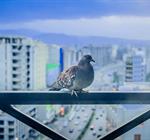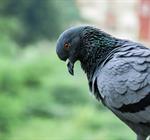25 Jul 2024 | Apex Environmental Services (UK) Ltd
How to Install Bird Netting: A Complete Guide
Let's face it, unwanted bird visitors can be a real headache. Whether you're trying to protect your garden, keep your property clean, or maintain a bird-free zone for health reasons, bird netting can be a game-changer. But how exactly do you go about installing it? Don't worry, we've got you covered. This guide will walk you through the process, step by step, so you can say goodbye to those pesky feathered friends in no time.
What is Bird Netting?
Before we dive into the installation process, let's quickly cover what bird netting actually is. Essentially, it's a mesh barrier designed to keep birds out of specific areas; it's usually made from durable materials like polyethylene or nylon, and comes in various sizes and strengths to suit different needs.
Benefits of Bird Netting
You might be wondering if bird netting is really worth the effort. The short answer is yes! Not only does it effectively keep birds away from your property, but it's also long-lasting, virtually invisible when properly installed, and won't harm the birds. Plus, it's a versatile solution that can be used in various settings, from gardens to industrial buildings.
If you're still on the fence about whether bird netting is right for you, you might want to check out our guide to choosing bird deterrent methods for a comprehensive overview of all the different options available.
Planning and Preparation
Now, let's get down to business. The key to successful bird netting installation lies in proper planning and preparation, so here's what you need to do:
Assessing the Area
First things first, take a good look at the area you want to protect. What's the shape? Are there any obstacles? Understanding your space will help you plan your installation more effectively.
Measuring
Next up, it's time to break out the measuring tape. You'll need accurate measurements to ensure you purchase the right amount of netting. Remember, it's always better to have a bit extra than to come up short.
Selecting the Right Netting
Not all bird netting is created equal. Consider factors like mesh size, material strength, and colour when making your selection. For most situations, a 3/4-inch mesh size works well, but if you're dealing with smaller birds, you might need a tighter mesh.
At Apex Bird Control, we offer a range of highly effective bird deterrent solutions, including different types of netting to suit various needs. Feel free to reach out if you need help choosing the right option for your situation.
Installation Process
Alright, now we're getting to the good stuff. Here's how to actually install your bird netting:
Gathering Materials
Before you start, make sure you have everything you need. This typically includes the netting itself, cable ties, hooks or eyebolts, tensioning wire, and tools like wire cutters and a drill.
Setting Up Supports
You'll need to create a framework to support your netting. This usually involves installing hooks or eyebolts around the perimeter of the area you're protecting, then running tensioning wire between these points.
Attaching the Netting
Now it's time to unfurl your netting and start attaching it to your support structure. Start at one corner and work your way around, securing the netting to the tensioning wire with cable ties every few feet.
Securing Edges
Pay special attention to the edges of your netting. You want to ensure there are no gaps where birds could sneak in. Use additional cable ties or clips to secure the edges tightly.
Safety Precautions
While installing bird netting isn't rocket science, it's important to keep safety in mind. Here are a few key points to remember:
Working Safely
If you're working at height, make sure you're using a stable ladder or scaffolding. Never overreach, and always have someone nearby to spot you.
Protective Gear
Gloves are a must when handling netting and wire. You might also want to wear safety glasses to protect your eyes from any stray wire ends.
Avoiding Hazards
Be aware of your surroundings. Watch out for power lines, and be careful not to damage any existing structures when installing your supports.
Maintenance and Care
Congratulations! You've installed your bird netting. But the job's not quite done yet. To keep your netting effective, you'll need to maintain it:
Regular Inspections
Check your netting periodically for any damage or sagging. Catching issues early can prevent bigger problems down the line.
Cleaning
While bird netting doesn't usually need much cleaning, you might want to give it a spray with a hose now and then to remove any built-up dirt or debris.
Repairing Damage
If you do spot any tears or holes, patch them up as soon as possible. Small repairs can usually be done with UV-resistant cable ties or patch kits.
Final Thoughts
Installing bird netting might seem like a daunting task at first, but with proper planning and execution, it's a project you can definitely tackle. Not only will you keep those pesky birds at bay, but you'll also have the satisfaction of a job well done.
Remember, if at any point you feel overwhelmed or unsure, don't hesitate to call in the professionals - we're always here to help ensure your bird control solution is installed correctly and effectively!


